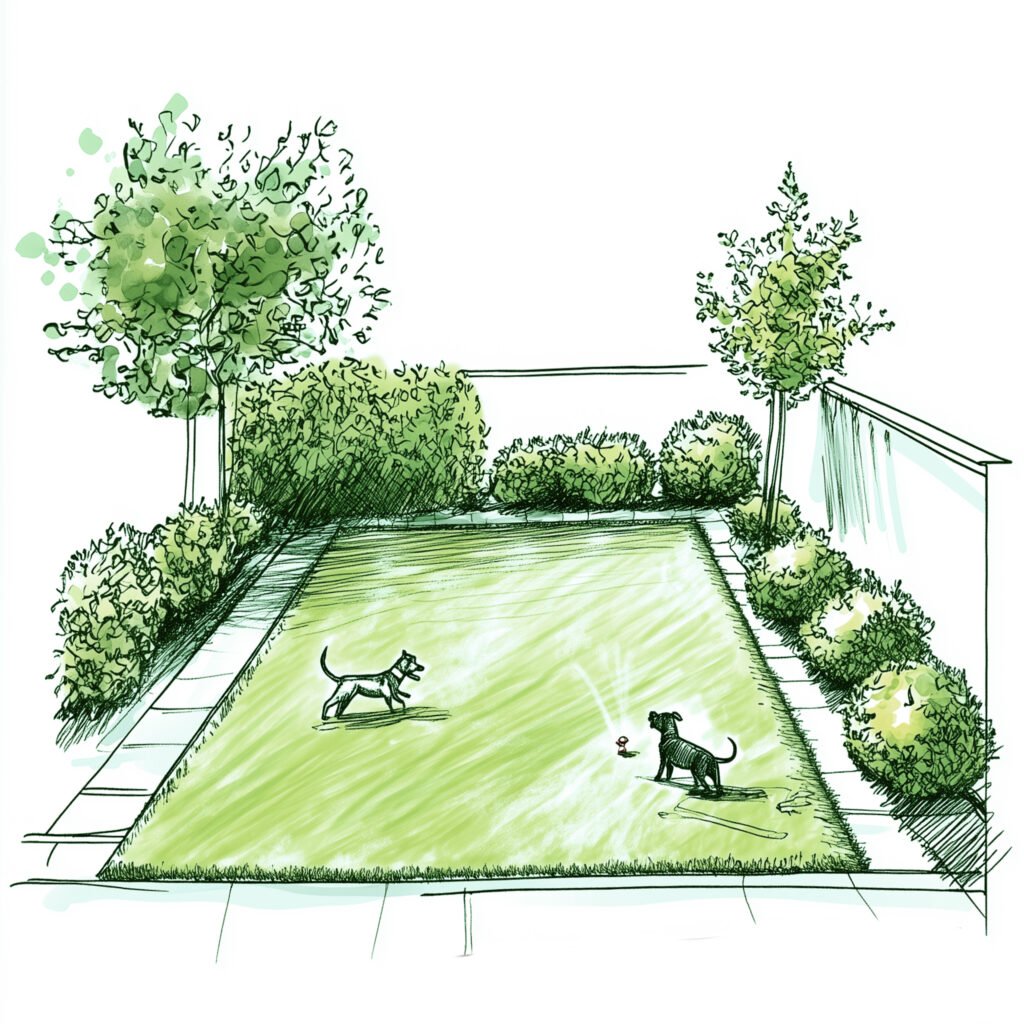
Creating a low-maintenance, pet-friendly garden takes more than just rolling out any artificial turf. In this guide, we explain exactly what to consider if you want a lawn that’s clean, safe, and built to last — for you and your four-legged friends.
Installing artificial grass is one of the easiest ways to enjoy a green, tidy garden all year round — but when you have dogs, the stakes get higher. A standard setup might look fine for now, but if drainage, turf strength, and cleaning aren’t planned properly, problems can appear fast: lingering smells, worn patches, even hygiene issues.
In this guide, we break down how to choose the right materials, prepare the base correctly, and maintain your garden so it stays fresh, safe, and great-looking — for years, not just for seasons.
Here’s what changes when you’re installing artificial grass for a dog-friendly garden:

1. Choosing the Right Turf
With Dogs:
When you have dogs, not just any artificial grass will do. You’ll need a more durable, pet-specific turf designed to handle heavier foot (and paw) traffic. Look for terms like “pet-friendly,” “dog-friendly,” or “heavy-duty” when selecting. These products typically have a denser pile, reinforced fibres, and stronger backing – usually polyurethane (PU) rather than traditional latex. PU is particularly important because it resists moisture absorption, helping to prevent unpleasant odours from building up over time. Some premium options even incorporate built-in odour-control technologies, offering even greater peace of mind.
Without Dogs:
For gardens without pets, the focus can shift more towards aesthetics. Standard landscaping artificial grass works beautifully, allowing you to prioritise the exact shade of green, the softness underfoot, and the visual style you prefer without worrying as much about extreme durability.
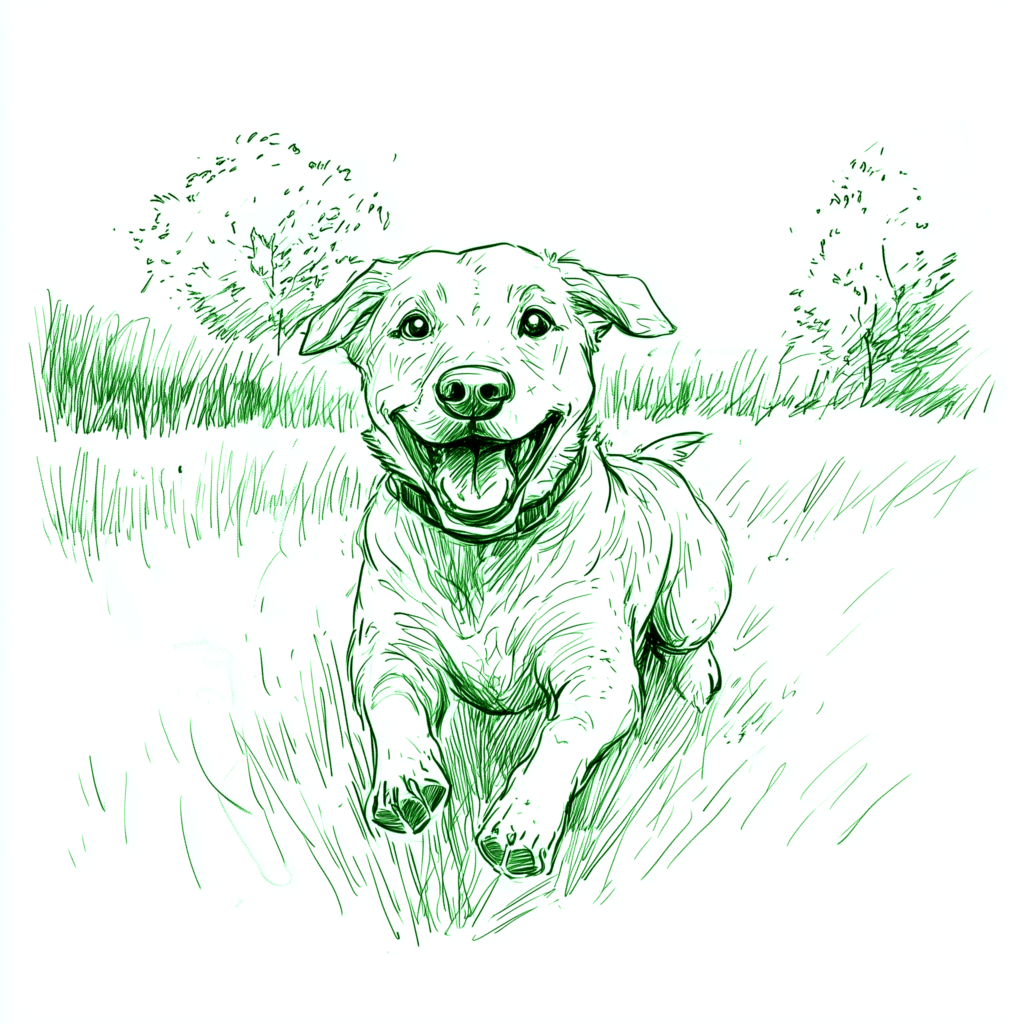
2. Sub-Base Preparation & Drainage
With Dogs:
In dog-friendly gardens, drainage isn’t just important – it’s critical. Instead of relying on sharp sand (which can compact poorly and trap moisture and odours), we recommend using a thicker sub-base composed of SuDS-compliant aggregates like 2-6mm granite or limestone grit. These materials create larger gaps between particles, allowing liquids – particularly urine – to drain quickly and effectively. In higher-traffic areas or heavy-use gardens, we may also install a drainage membrane beneath the turf to further speed up liquid dispersal and keep the surface fresh and dry.
Without Dogs:
In gardens without dogs, standard preparation is often sufficient. A compacted MOT Type 1 stone base topped with a thin levelling layer of sharp sand typically provides all the drainage and stability needed for everyday use.
3. Infill Material
With Dogs:
Choosing the right infill is one of the most overlooked but important steps for dog owners. Instead of basic sand infill, pet gardens benefit enormously from using Zeolite (for more on the safety of zeolite for animals, see Critical Review on Zeolite Clinoptilolite Safety and Medical Applications in vivo – Frontiers in Pharmacology) – a natural volcanic mineral known for its ability to absorb and neutralise ammonia, the compound that causes urine odours. There are also specially formulated pet-friendly infills available that enhance odour control and drainage. Getting this right makes a huge difference in long-term cleanliness and comfort.
Without Dogs:
For standard gardens, kiln-dried silica sand or other traditional infill materials are commonly used. Their main role is to weigh the grass down, help blades stay upright, and provide a soft, natural feel underfoot.
4. Weed Membrane
With Dogs:
Weed membranes in pet gardens require careful thought. Traditional non-porous membranes can trap moisture and urine, causing lingering smells. If a weed barrier is used, it should be a highly porous version that allows fluids to drain through easily. Alternatively, some dog-friendly installations skip the membrane altogether, relying on a carefully compacted and prepared sub-base to prevent weed growth naturally without compromising drainage.
Without Dogs:
In non-pet gardens, a standard weed membrane is typically installed to block weeds and maintain a neat, low-maintenance finish without impacting drainage too severely.
5. Cleaning and Maintenance
With Dogs:
Keeping artificial grass clean with dogs involves a little more effort, but it’s easy with the right approach.
• Solid waste should be picked up promptly.
• Regular rinsing (at least once a week in busy areas) helps flush away residual urine and keep the turf fresh.
• Pet-safe enzymatic cleaners can be used monthly or as needed to break down organic matter at a molecular level, eliminating odours rather than just masking them.
• Natural neutralisers like a light vinegar and water solution (50/50) or a sprinkle of baking soda can also help manage occasional smells naturally and safely.
Some dog owners even install basic sprinkler systems to simplify rinsing larger gardens.
Without Dogs:
For gardens without pets, maintenance is much simpler. Brushing up the blades periodically to maintain an upright look, removing occasional debris like leaves or twigs, and giving the surface a quick hose-down every so often are usually all that’s needed to keep it looking lush and clean.
To summarise the key differences quickly, the table below highlights the main characteristics and requirements for artificial grass installations in gardens with dogs compared to standard garden setups — from turf selection to cleaning and maintenance.
| Aspect | With Dogs (Pet-Friendly) | Without Dogs (Standard Garden) |
|---|---|---|
| Turf Selection | Pet-specific grass, PU backing, odour control | Standard landscaping turf |
| Sub-Base | Thicker base, SuDS aggregate, strong drainage | Standard MOT + sharp sand |
| Infill Material | Zeolite or pet-specific infill (odour control) | Standard kiln-dried sand |
| Weed Membrane | Highly porous or skipped for better drainage | Standard membrane for weed control |
| Cleaning | Frequent rinsing, enzyme cleaners, odour neutralisers | Occasional brushing and hosing |
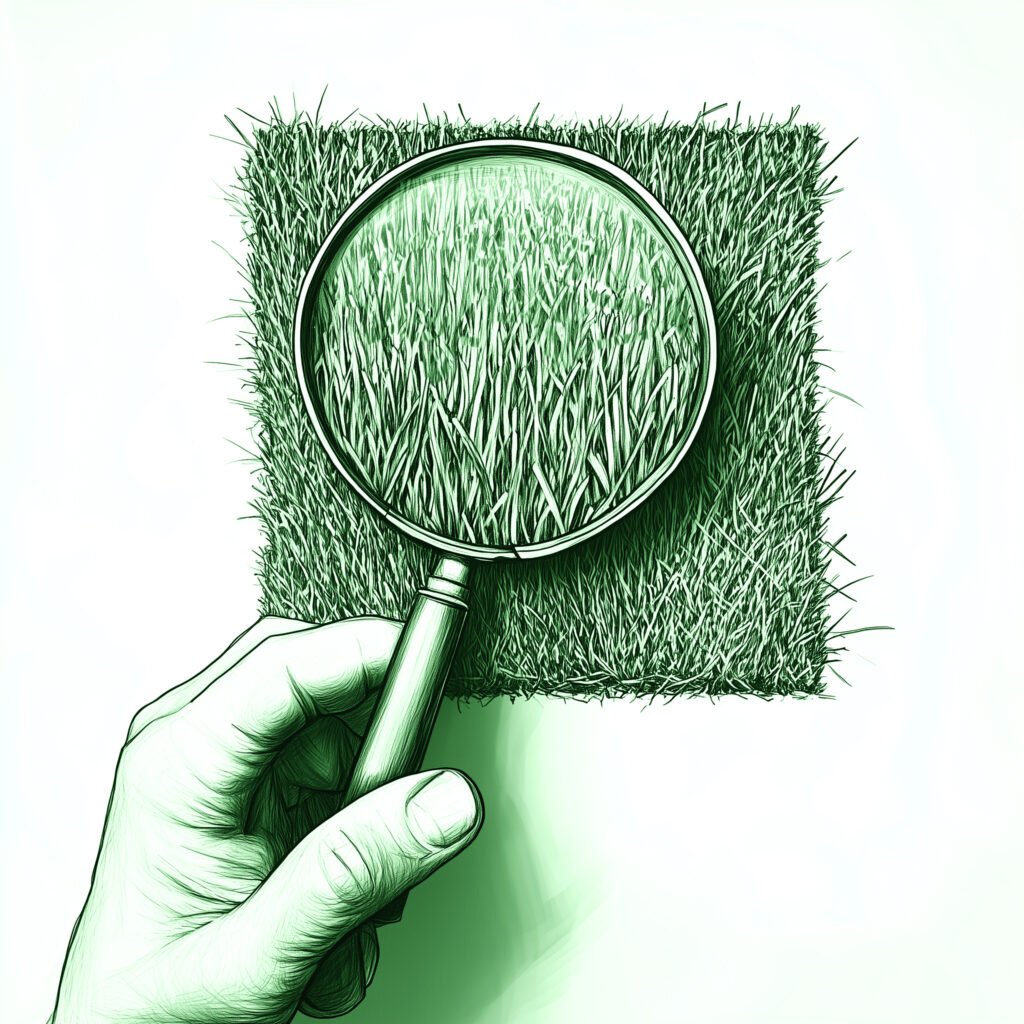
Choosing the Right Grass Density for a Dog-Friendly Garden
When selecting artificial grass for a home with dogs, pile density matters just as much as durability.
Higher-density turfs (more fibres per square metre) resist flattening under constant paw traffic and stay looking lush longer. A thicker weave also helps conceal minor wear and tear caused by running, digging, or play.
For most dog-friendly gardens, we recommend:
- Pile height: around 30–35mm (anything higher can flatten too easily with use)
- Density: over 16,000–18,000 stitches per square metre for optimal performance
This ensures a surface that’s both resilient and comfortable – soft enough for pets to enjoy, but tough enough to survive the seasons.
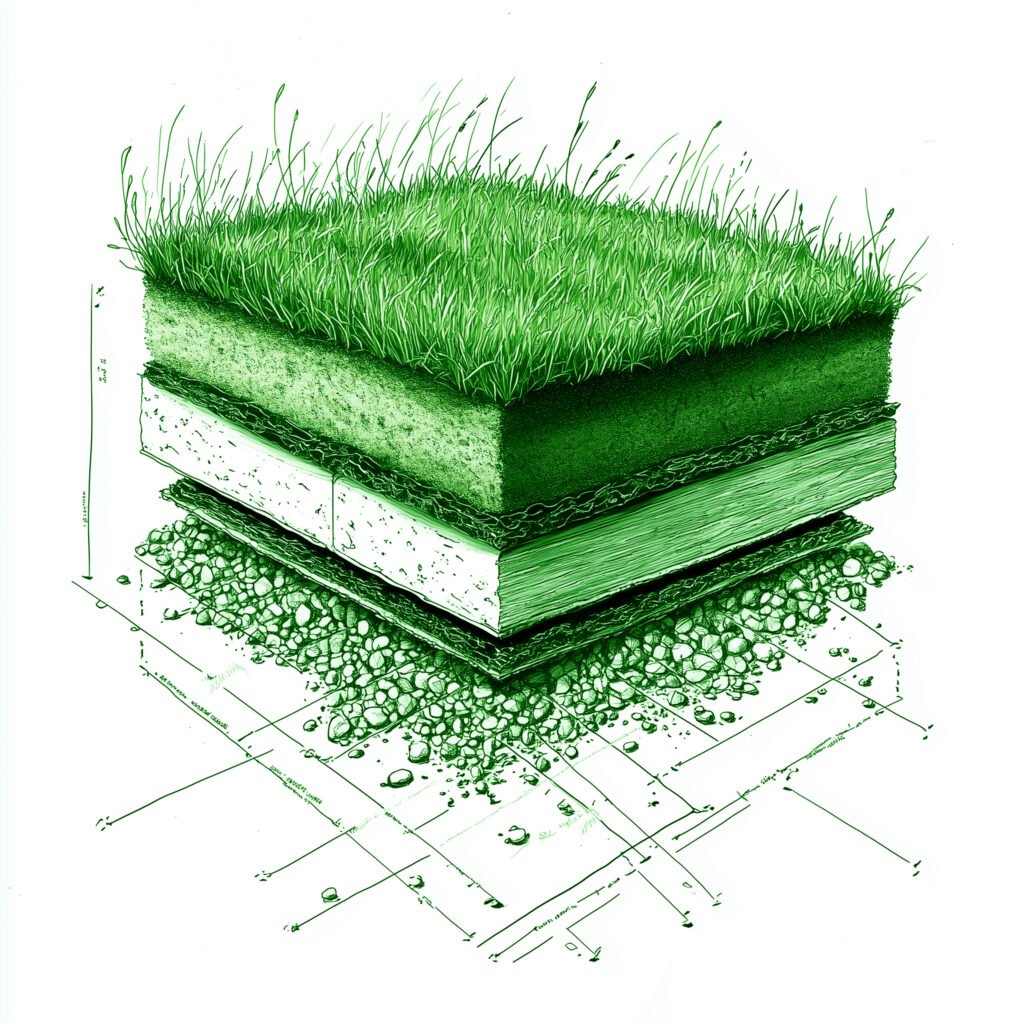
Common Mistakes When Installing Artificial Grass for Dogs
Even good-quality turf can fail if installation shortcuts are taken. Some of the most common mistakes we encounter include:
- Using sharp sand instead of grit: Sharp sand retains moisture and urine, leading to lingering odours. Always use a SuDS-compliant aggregate that promotes fast drainage.
- Installing a standard weed membrane: Many membranes block water flow and trap smells. For pet gardens, it’s better to use a highly porous option or skip the membrane altogether if drainage is designed well.
- Choosing soft landscaping turf: Turf made for aesthetic gardens often lacks the durability needed for active pets. Without reinforced backing and strong fibres, it wears out quickly.
- Ignoring drainage planning: Without proper sloping or drainage layers, even the best artificial grass can turn into a soggy, smelly mess after rain or heavy use.
Careful preparation and the right materials are key to a garden that stays fresh and functional over time.
Why Dog Owners Love Artificial Grass (and Their Dogs Do Too)
Switching to pet-friendly artificial grass can make a huge difference for everyday life. Some of the real-world advantages our clients have noticed include:
- No more muddy paw prints: Even after heavy rain, the surface stays clean and dry, keeping homes (and dogs) much tidier.
- Less maintenance year-round: No mowing, no fertilising, no muddy patches to reseed every spring.
- Safe and comfortable play areas: Properly chosen turf is soft underfoot (and under paw), perfect for zoomies, naps, and everything in between.
- Easier hygiene: Waste is easy to clean, odours are reduced with the right infill, and regular hosing down keeps the area fresh.
Ultimately, a well-installed, dog-friendly lawn doesn’t just benefit pets – it transforms outdoor living for the whole family.
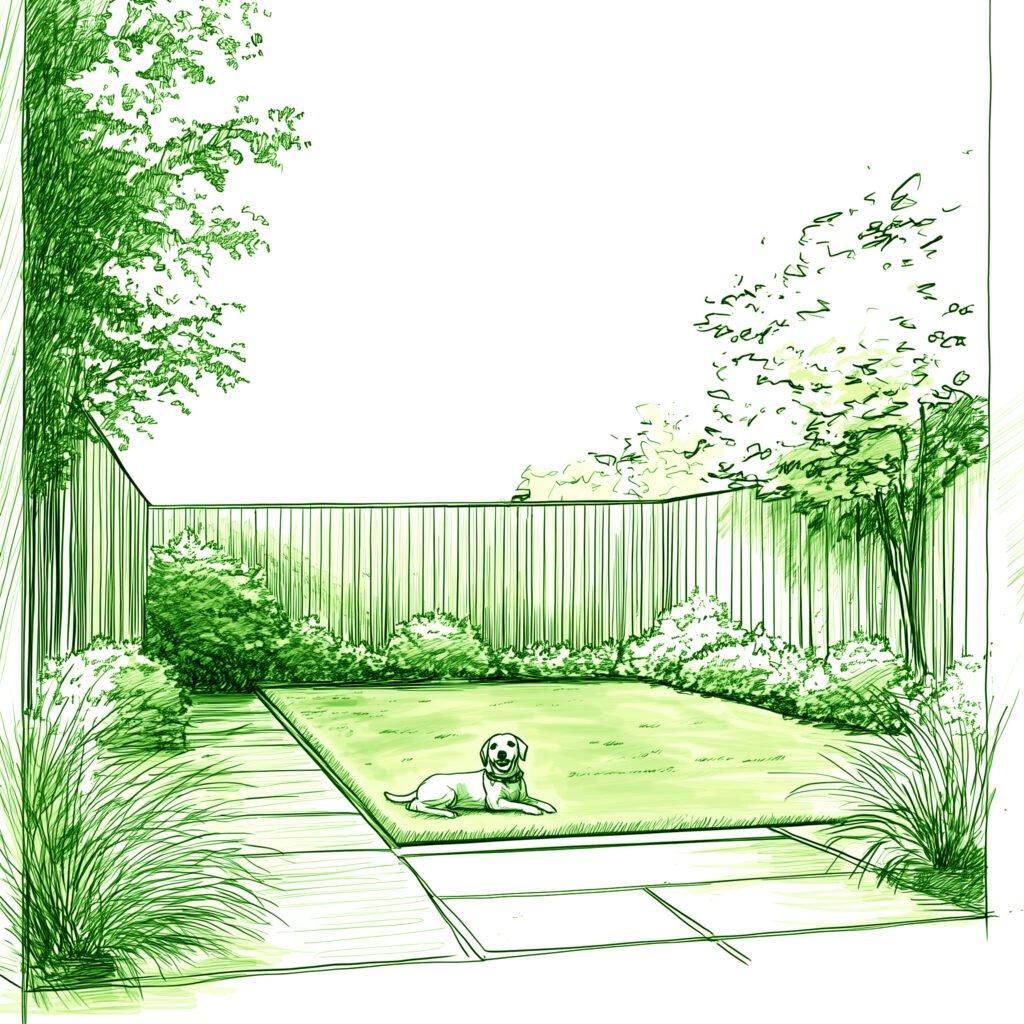
Final Thoughts
Creating a dog-friendly artificial lawn isn’t complicated — but it does mean thinking beyond just looks. A bit of extra preparation now ensures a garden that’s clean, fresh-smelling, and resilient for years to come.
Thinking about making a change? Drop us a message — we’re always happy to talk about gardens, dogs, and all the little details that make outdoor life better.
FAQs – Artificial Grass for Gardens with Dogs
Q: Is artificial grass safe for puppies?
A: Yes, properly selected artificial grass is completely safe for puppies. It provides a soft, non-toxic surface that’s easy to clean. Make sure to choose turf with no heavy metal content and opt for products certified for child and pet safety where possible.
Q: What type of artificial grass is best for dogs?
A: For homes with pets, we recommend turf that is specifically labelled as “dog-friendly” or “pet-safe.” Look for products with polyurethane (PU) backing, high pile density, and strong drainage capabilities. These materials resist odors, stay resilient under active paws, and are easier to clean than standard landscaping grasses.
Q: How do I prevent bad smells in artificial grass used by dogs?
A: Proper drainage is key. Start with a SuDS-compliant aggregate sub-base, avoid using standard sand infill, and choose a pet-safe infill like Zeolite that neutralizes ammonia. Regular rinsing and occasional use of pet-friendly enzyme cleaners also help keep the surface fresh and hygienic.
Q: Can dogs damage artificial turf by digging?
A: With professional installation and high-quality turf, digging issues are rare. Using reinforced edges and selecting a dense, strong pile makes the surface less tempting for dogs to disturb. However, persistent diggers might still require extra attention, like reinforcing corners or using protective edging.
Q: How often should I clean artificial grass when I have dogs?
A: Ideally, rinse high-traffic areas once or twice a week, especially where your dog tends to urinate. Remove solid waste promptly and use a pet-specific enzymatic cleaner as needed. Routine maintenance helps extend the life of the turf and keeps the garden smelling fresh.
Q: Does artificial grass get too hot for dogs in summer?
A: In Ireland, extreme heat isn’t typically an issue, but darker-coloured artificial grass can warm up under direct sun. Choosing lighter-coloured or heat-reflective turf helps, and providing shaded areas ensures your dog stays comfortable even on warmer days.
Q: Can artificial grass help with muddy paw problems?
A: Absolutely. One of the biggest advantages of installing artificial grass for dogs is the reduction of mud and mess inside the house. Even after heavy rain, a well-drained artificial lawn stays dry at the surface, meaning fewer dirty paw prints and less time spent cleaning floors.
At Timbermasters, we design with your whole family in mind — including the four-legged members. From choosing the right materials to perfecting the final details, we make sure your garden is not just beautiful, but durable, safe, and easy to enjoy — for everyone who calls it home.

